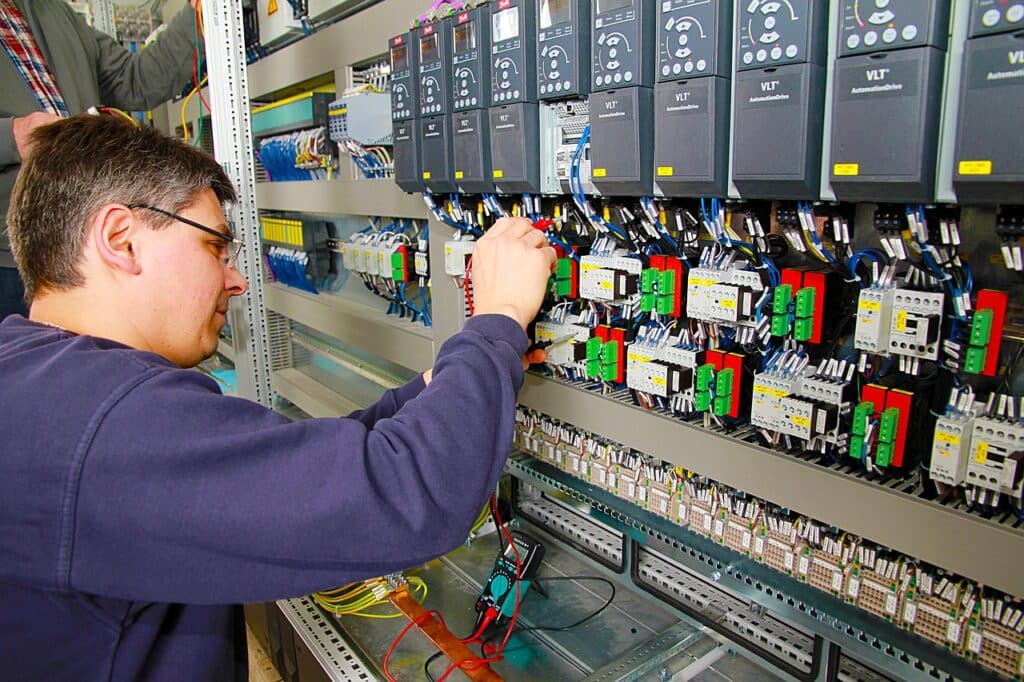With workplace automation becoming an increasingly prominent tool to streamline operations and increase productivity, it is rapidly transforming the professional landscape as we know it. Through advancements in technologies such as APIs, big data, machine learning, and AI, various types of automation are being introduced into different business contexts —each offering a blend of benefits and challenges. From higher productivity rates and enhanced employee safety to the inevitable initial costs and the massive need for skill upgradation, this revolutionary transition brings with it a complex mix of elements. Despite the concerns about potential job cuts due to automation, many experts believe it will simply redirect employment towards novel sectors. As part of the armoury pushing the automation frontier, cloud-first platform Meraki and its Marketplace, offer innovative IT and IoT solutions to businesses, helping them to remain competitive amidst constant technological evolution. Notwithstanding the diverse opinions and concerns, the prospects of workplace automation seem to be an indefatigable journey that progressively reshapes and redefines future work spaces.
Understanding Workplace Automation
workplace automation is quickly becoming an integral aspect of modern business. With technologies such as APIs, big data, machine learning, and AI being continually developed and honed, the workplace as we know it is continually evolving and updating.
Definition of workplace automation
Workplace automation is a strategic tool used to decrease manual intervention in predictable tasks. By relegating these tasks to automated systems, businesses can increase both productivity and efficiency while freeing up employees to focus on more complex and engaging activities.
Tools driving advancements in automation
Advancements in several key areas of technology are driving the move toward increased workplace automation. Among these technologies are APIs, which allow different software systems to communicate and coordinate with each other. Big data and analytic tools help to parse and understand massive amounts of information. However, these tools need machine learning and AI, to provide insights that allow for better decision-making and further streamline operations.
The role of APIs, big data, machine learning, and AI in workplace automation
APIs play a fundamental role in automation of the workplace by allowing integration across systems and applications. Big data helps businesses improve their strategies and operations by understanding patterns and trends. Machine learning and AI take things to the next level by giving machines the ability to learn and improve from experience without being explicitly programmed. This improves productivity and allows for even more efficient automation and optimisation of workflows.
Current Types of Workplace Automation
There are several types of workplace automation that businesses currently employ, including hybrid workplace automation, smart spaces with digital tags and asset tracking, and marketing automation.
Hybrid workplace automation
Hybrid workplace automation blends traditional automation with cognitive technologies such as machine learning, natural language processing, and robotics. This type of automation significantly increases efficiency and can handle a more diverse range of tasks, allowing for a cohesive and efficient workflow.
Smart spaces with digital tags
Digital tags are a unique form of automation that allows for detailed tracking and organisation. They can be used to quickly locate and organise assets, monitor the status of equipment, and even streamline the automation of routine tasks, enhancing productivity and efficiency.
Smart spaces with asset tracking
Using technology to track assets, whether physical or digital, allows businesses to maintain control over their inventory, improve their resource management, and reduce the risk of loss or misuse.
Marketing Automation
Marketing automation leverages software to automate repetitive marketing tasks such as email campaigns, social media posting, and ad placements. This simplifies marketing processes, allowing businesses to optimise their marketing strategies and improve their outreach.

The Pros of Workplace Automation
There are numerous benefits associated with the implementation of automation in the workplace.
Increase in productivity
By automating repetitive tasks, employees are able to focus on more essential or complex tasks, leading to a significant increase in overall productivity.
Cost savings
Over time, automation leads to cost savings by reducing the need for additional staff to handle manual tasks and by streamlining operations to avoid wasteful resource usage.
Enhanced employee safety
In industries that involve potentially hazardous tasks, robots and automated systems can take over, significantly reducing the risk to human life.
Reduction of human error
As machines are not prone to fatigue or distraction, automation can significantly lower the incidence of error, improving the overall quality and consistency of work.
The Cons of Workplace Automation
Despite the numerous benefits, automation in the workplace also brings several disadvantages that businesses need to be cognizant of.
Requirement for new skills
One of the biggest challenges is the need for new skills. As traditional roles become automated, employees will need to acquire new abilities in areas such as AI and data analysis.
Initial set-up costs
Automation can be costly to implement initially, particularly when it comes to training staff and setting up new systems.
Increased security needs
With the increase in automation and digital systems, the need for robust cybersecurity increases as well.

The Debate: Job Loss or Job Shift with Automation
One of the major debates surrounding automation is its potential to replace human jobs.
Arguments for job loss due to automation
Some claim that automation will likely lead to job losses as machines become capable of performing tasks that were once handled by humans.
Opposing viewpoints: job shift rather than job loss
Others counter this claim by suggesting that while automation may indeed minimize some types of jobs, it will also create new opportunities in fields that are yet to be discovered.
Cases of job transition due to automation
History has shown that advancements in technology often lead to a shift in the nature of jobs, rather than an overall decrease. As tasks become automated, the need for those who can develop, operate, and maintain these systems increases.
The Role of Meraki in Workplace Automation
Meraki, a cloud-first platform designed by Cisco, plays a pivotal role in the world of workplace automation.
Understanding Meraki
Meraki provides IT and IoT solutions with a focus on improving hybrid workforce experiences. This cloud-management system supports digital transformation in businesses through streamlined, cloud-driven experiences.
How Meraki supports hybrid workforce experiences in digital transformation
Meraki helps businesses usher in the digital transformation era by providing IT solutions that support a mobile and distributed workforce. This allows for seamless collaboration among teams, irrespective of their location.
Meraki Marketplace and its role in solving IT and IoT challenges
Meraki Marketplace offers a broad catalog of applications developed using open APIs to help businesses solve IT and IoT operational challenges. These applications help businesses stay competitive, keeping them ahead of the curve at times of rapid technological developments.

Examples of Practical Applications of Workplace Automation
Workplace automation has seen practical application in various sectors, including manufacturing, healthcare, and customer service.
Examples in manufacturing
In the manufacturing sector, automation has been used to streamline assembly lines, reduce waste, and increase the speed of production.
Examples in healthcare
In healthcare, automation has brought about improvements in patient record-keeping, appointment setting, and even some surgical procedures.
Examples in customer service
In customer service, chatbots have become commonplace, directing customers to appropriate resources and answering frequently asked questions without the need for human intervention.
Emerging Trends in Workplace Automation
Workplace automation is continuously evolving with advancements in AI and machine learning, the introduction of automation as a service, and its use in remote work.
Advancements in AI and machine learning
AI and machine learning are continually pushing the boundaries of what’s possible in workplace automation. These technologies are expected to propel automation to entirely new levels in the upcoming years.
Automation as a service
Automation as a service is an emerging trend that allows businesses to outsource their automation needs. This eliminates the need for businesses to overview every single operation, thus saving costs and resources.
Use of automation in remote work
With the rise of remote work, workplace automation has become essential. Automation tools allow for better organization, communication, and productivity in virtual workspaces.
The Future of Workplace Automation
The future of workplace automation rests in the continuation of technological development and the changing nature of job roles.
Predicted changes in workplace automation
As technology continues to advance, workplace automation will continue to evolve. This means not only more automated tasks but also the creation of entirely new robots and AI capable of performing increasingly complex tasks.
The role of ongoing technological advancements
Ongoing technological advancements will continue to drive workplace automation, leading to even more seamless integration of technologies and increasingly efficient workflows.
The future of job roles in relation to automation
As automation continues to increase, the need for certain job roles is likely to decrease. However, new roles will undoubtedly be created in areas such as the programming and operation of automated systems.
Adopting Workplace Automation: Overcoming Fear and Embracing Opportunity
Adopting automation can seem daunting but with careful preparation, businesses can leverage automation for their growth and success.
Addressing fears about workplace automation
Fear about workplace automation primarily stems from concerns over job losses. However, by providing necessary training and reskilling avenues, businesses can help employees transition into new roles within the automated environment.
How to adapt to and leverage automation for business growth
Businesses can adapt to the changing landscape by staying informed about current trends in automation and providing resources and training for employees to acquire new skills. Leveraging the power of automation can lead to business growth and improved competitiveness in the market.
Guidelines for successfully implementing automation in the workplace
Successful implementation of automation requires careful planning, communication, and support. Starting small with automation of simple tasks, providing training, and ensuring clear communication about the benefits of automation can help to achieve a smooth transition.
Continual advancements in technology and changing business needs will ensure that workplace automation continues to evolve, addressing new complexities and driving further efficiencies. By embracing automation, businesses can unlock their full potential and set the stage for continued success.
